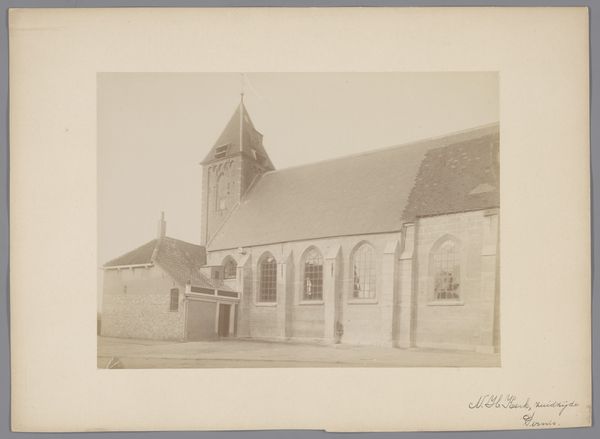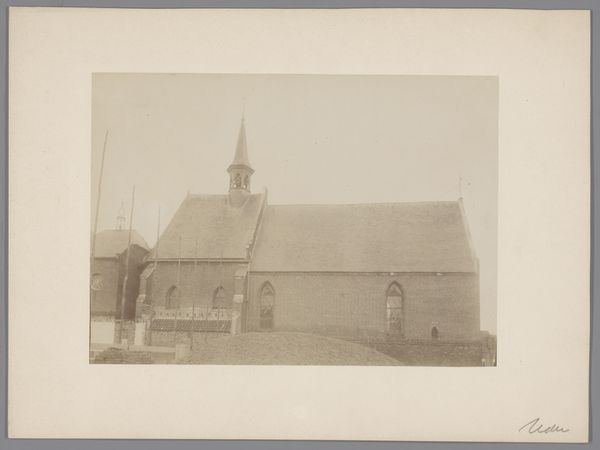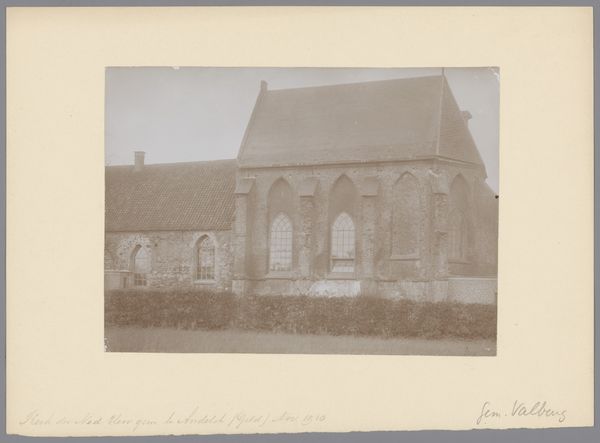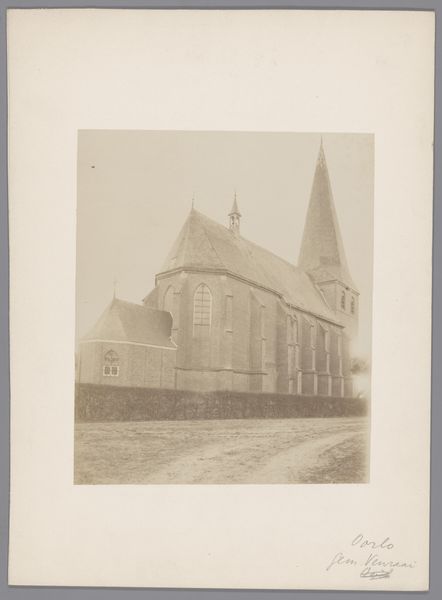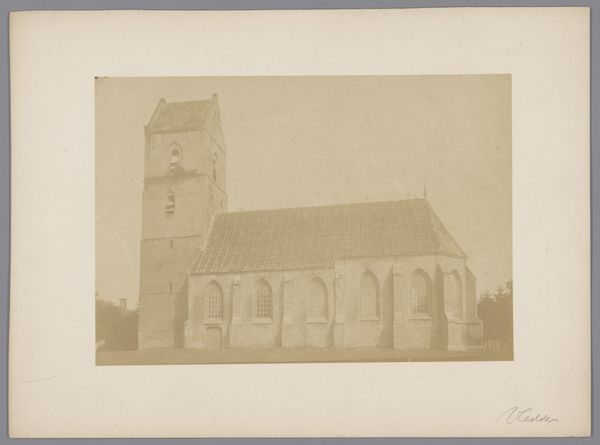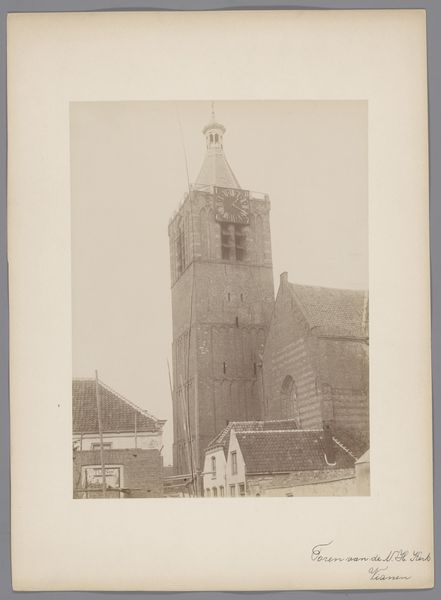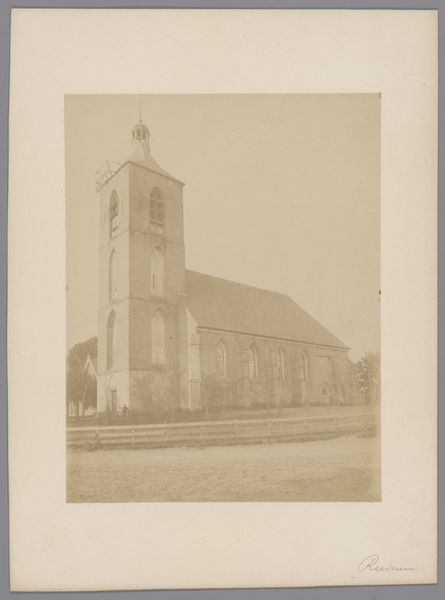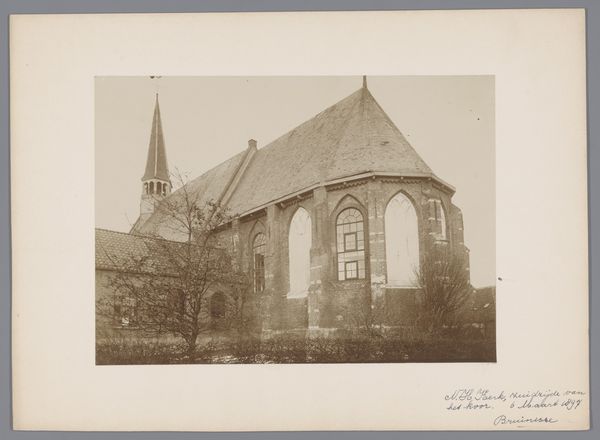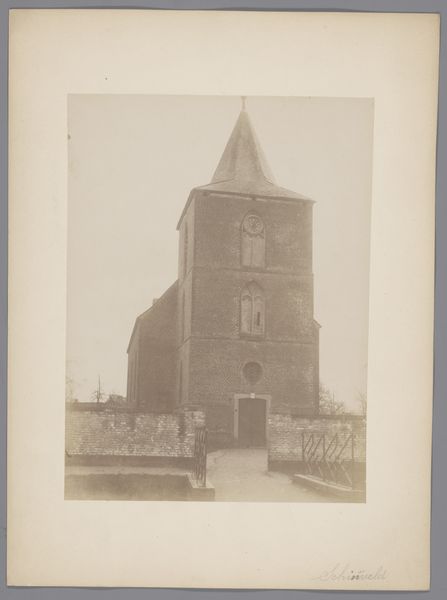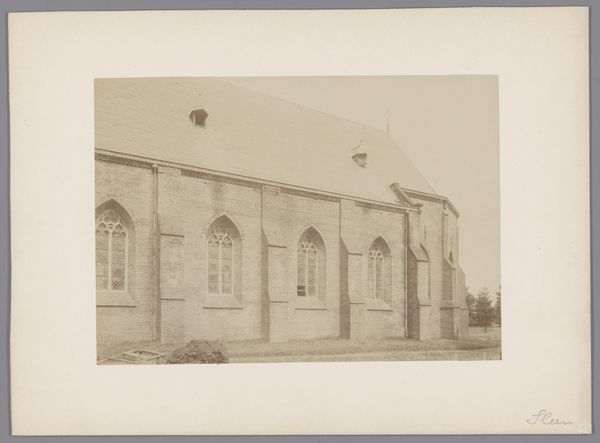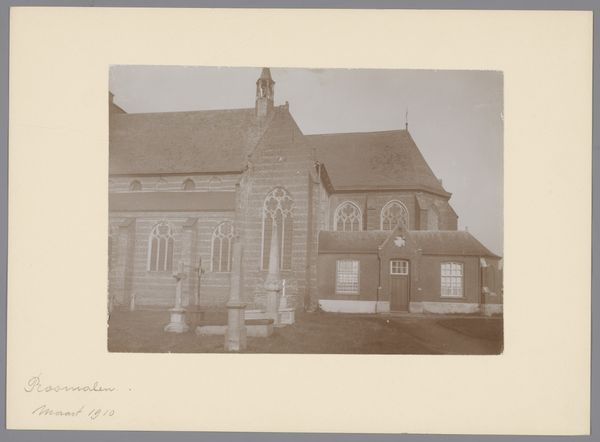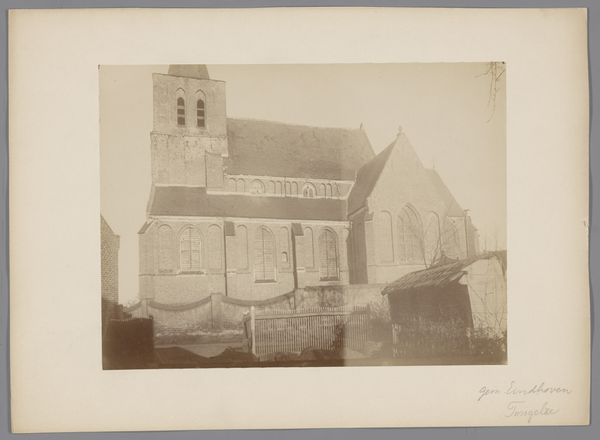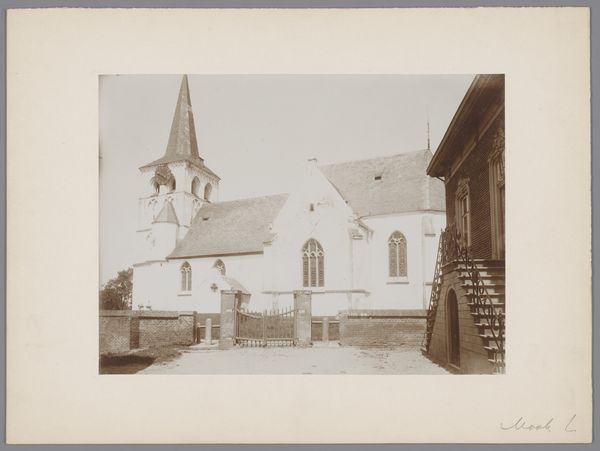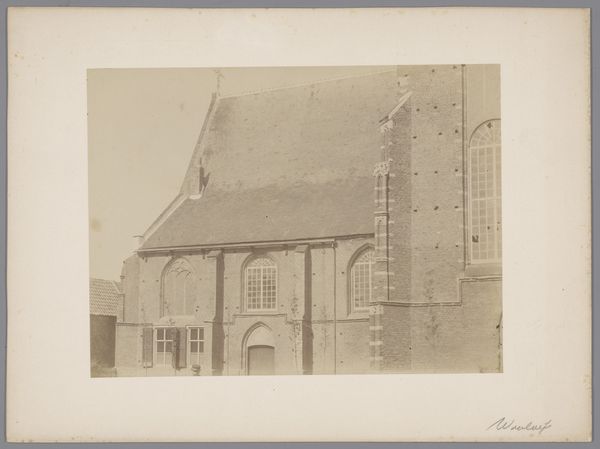
Dimensions: height 165 mm, width 216 mm
Copyright: Rijks Museum: Open Domain
Curator: Here we have an intriguing photograph entitled "Gezicht op de Rooms-Katholieke Kerk te Bunde," dating back to 1904, attributed to an anonymous artist working for Monumentenzorg. Editor: It evokes a sense of quiet solidity, doesn't it? The monochrome palette amplifies this. A kind of humble grandeur comes to mind. Curator: Considering the period, one can imagine the role of the church within the local community and broader societal structures. Photography at that time was still very much tied to documentation, which means this might have captured the local congregation's hopes, anxieties, even resistance against emerging secularization. Editor: Yes, look at the architectural symbolism—the spire reaching upwards, the arched windows echoing hope. Note the figures standing dwarfed at the foot of the building. It reflects the enduring power of faith amidst the landscape. Were such views created with the purpose of preservation? Curator: Likely, though photography was already gaining ground beyond documentation. So the act of depicting this house of worship might be considered a social act that both reflects and reinforces a set of specific political, economic, and cultural ideologies in that precise moment of history. How does it challenge the dominance of rural perspectives in this era? Who were the individuals who gathered, prayed, socialized, and mourned within its walls? Editor: Indeed. Thinking of memory... Churches represent permanence—cultural and spiritual touchstones. Images of them provide us continuity across generations. Seeing it prompts questions about ritual, community, and belonging. What stories are hidden within those stone walls? Curator: In its simple composition lies an echo of early 20th-century European social tensions reflected in the everyday—class, religion, landscape—captured with the apparent objectivity of the camera. A valuable historical record offering insights into a complex moment in time. Editor: It has been fascinating to trace these layers of significance embedded in such a serene image. It shows how faith can be visualized. Curator: I agree, and in that sense, it prompts crucial dialogue around photography as a document but equally as a product of social construction. It highlights the power relations embedded within seemingly innocuous visual representations of space and time.
Comments
No comments
Be the first to comment and join the conversation on the ultimate creative platform.
